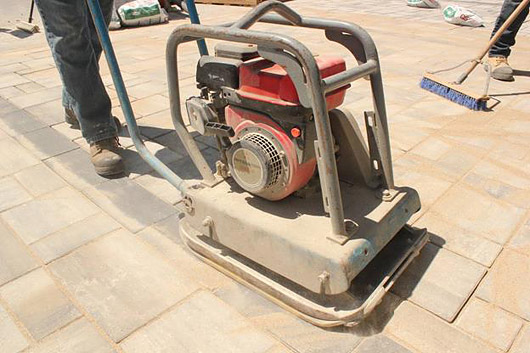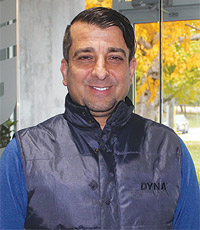Articles written by guest contributors

Washout during heavy rains is the most common problem contractors experience with polymeric sand. The chief cause of washout is the failure to compact the sand.
Installing polymeric sand successfully
By Frank GagroOver the past 2 decades as a manufacturer in the hardscape industry, we have seen a dramatic change with interlocking concrete pavement, jointing materials and maintenance products. The industry has evolved from small pavers to large slabs, from conventional jointing sand to stabilized jointing sand, and solvent-based sealers and cleaners to more ecologically friendly water-based product lines. New products are on the rise.
With new product characteristics come new installation methods as well as new specifications. Education and experience are essential for proper installations. Polymeric sand is a perfect example. Polymeric sand or polymerized sand is sand that’s been modified with certain chemicals to set up when activated with water.
There are many manufacturers of polymeric sand on the market. We have had the opportunity to examine many of them and have determined that they are all unique in characteristics. From sand gradation, color and mineral content to chemical blends. It varies from one brand to another. We also noted that these differences in characteristics, required slight adjustment in installation methods to get the optimum results.
Polymeric sand is the most sensitive link in the interlock pavement installation system. There are many issues that can occur during and after installation of the polymeric sand if the instructions specified by the manufacturer are not followed properly and precisely.
Washout, activation issues, hazing & dusting
The most common problem is the washing out of polymeric sand. When polymeric sand is not compacted using a vibrating tampering plate, the sand will wash out with heavy rains. This densification step is often neglected by installers.Another common complaint occurs during the activation process, such as not hardening. If polymeric sand is over or under watered, the performance will be short lived.
On a positive note, a major innovation this year has addressed hazing and dusting issues. Leading manufacturers have engineered a product that virtually eliminates hazing and dusting problems, reducing the overall installation time.

Frank Gagro
Education solution
Fortunately, many of these problems can be minimized by education provided by manufacturers through seminars, contractor certification programs, social media publications and proper marketing. Most reputable manufacturers also offer technical data material on their products, as well as instructional videos, local demonstration events and technical support representatives. Continuous education and industry specification knowledge will drastically minimize false expectations on polymeric sand.The hardscape industry is moving fast. I was fortunate to attend HNA 2016 this October after a 3 year absence. What I noticed was change, big change, with many new products available on the market. As a manufacturer, this reinforced how critical it is for us to be constantly and frequently educating our customers to eliminate many avoidable problems.
With 20 years in the hardscape industry, Frank Gagro is Vice President of Business Development and Marketing with Dyna Advanced Building Systems. For more information, call (866) 861-6424 or visit Dyna.ca













